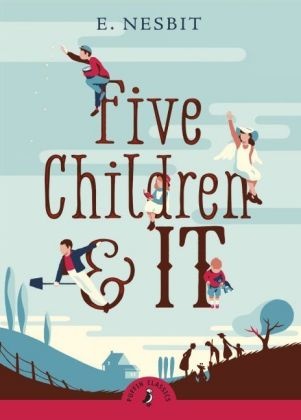Read more
Informationen zum Autor Edith Nesbit was a mischievous child who grew up into an unconventional adult. With her husband, Hubert Bland, she was one of the founder members of the socialist Fabian Society; their household became a centre of the socialist and literary circles of the times. E. Nesbit turned late to children's writing. Her first children's book, The Treasure Seekers , was published in 1899 to great acclaim. Other books featuring the Bastable children followed, and a series of magical fantasy books, including Five Children and It also became very popular. The Railway Children was first published monthly in the London Magazine in 1905, and published as a book in 1906, which has been in print ever since. Quentin Blake has illustrated more than three hundred books and was Roald Dahl's favourite illustrator. In 1980 he won the prestigious Kate Greenaway Medal. In 1999 he became the first ever Children's Laureate and in 2013 he was knighted for services to illustration. Quentin Blake has illustrated more than three hundred books and was Roald Dahl's favourite illustrator. In 1980 he won the prestigious Kate Greenaway Medal. In 1999 he became the first ever Children's Laureate and in 2013 he was knighted for services to illustration. Klappentext Blake, the beloved illustrator of most of Roald Dahl's popular children's books, delivers the Introduction to this repackaged edition of Nesbit's class tale of five children and their pet--an ancient San-fairy. Illustrations. * CHAPTER 1 * Beautiful as the Day The house was three miles from the station, but before the dusty hired fly had rattled along for five minutes the children began to put their heads out of the carriage window and to say, "Aren´t we nearly there?" And every time they passed a house, which was not very often, they all said, "Oh, is this it?" But it never was, till they reached the very top of the hill, just past the chalk quarry and before you come to the gravel pit. And then there was a white house with a green garden and an orchard beyond, and Mother said, "Here we are!" "How white the house is," said Robert. "And look at the roses," said Anthea. "And the plums," said Jane. "It is rather decent," Cyril admitted. The Baby said, "Wanty go walky"; and the fly stopped with a last rattle and jolt. Everyone got its legs kicked or its feet trodden on in the scramble to get out of the carriage that very minute, but no one seemed to mind. Mother, curiously enough, was in no hurry to get out; and even when she had come down slowly and by the step, and with no jump at all, she seemed to wish to see the boxes carried in, and even to pay the driver, instead of joining in that first glorious rush round the garden and the orchard and the thorny, thistly, briery, brambly wilderness beyond the broken gate and the dry fountain at the side of the house. But the children were wiser, for once. It was not really a pretty house at all; it was quite ordinary, and Mother thought it was rather inconvenient, and was quite annoyed at there being no shelves, to speak of, and hardly a cupboard in the place. Father used to say that the ironwork on the roof and coping was like an architect´s nightmare. But the house was deep in the country, with no other house in sight, and the children had been in London for two years, without so much as once going to the seaside even for a day by an excursion train, and so the White House seemed to them a sort of fairy palace set down in an earthly paradise. For London is like prison for children, especially if their relations are not rich. Of course there are the shops and the theatres, and Maskelyne and Cook´s, and things, but if your people are rather poor you don´t get taken to the theatres, and you can´t buy things out of the shops; and London has none of those nice things that children may play with without hurtin...

